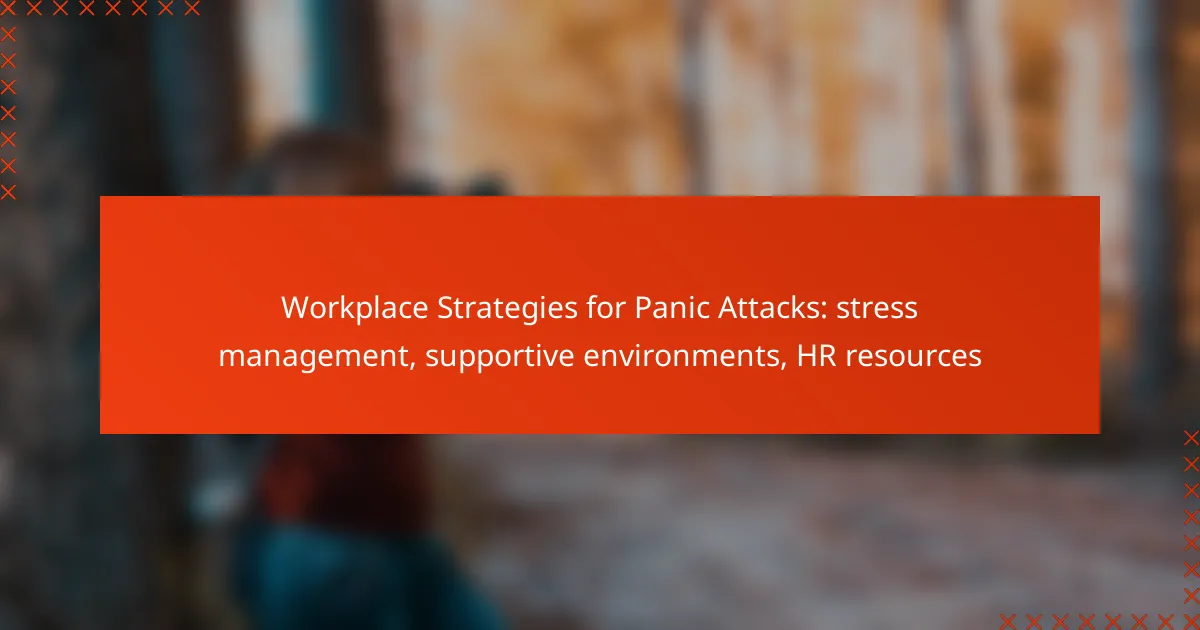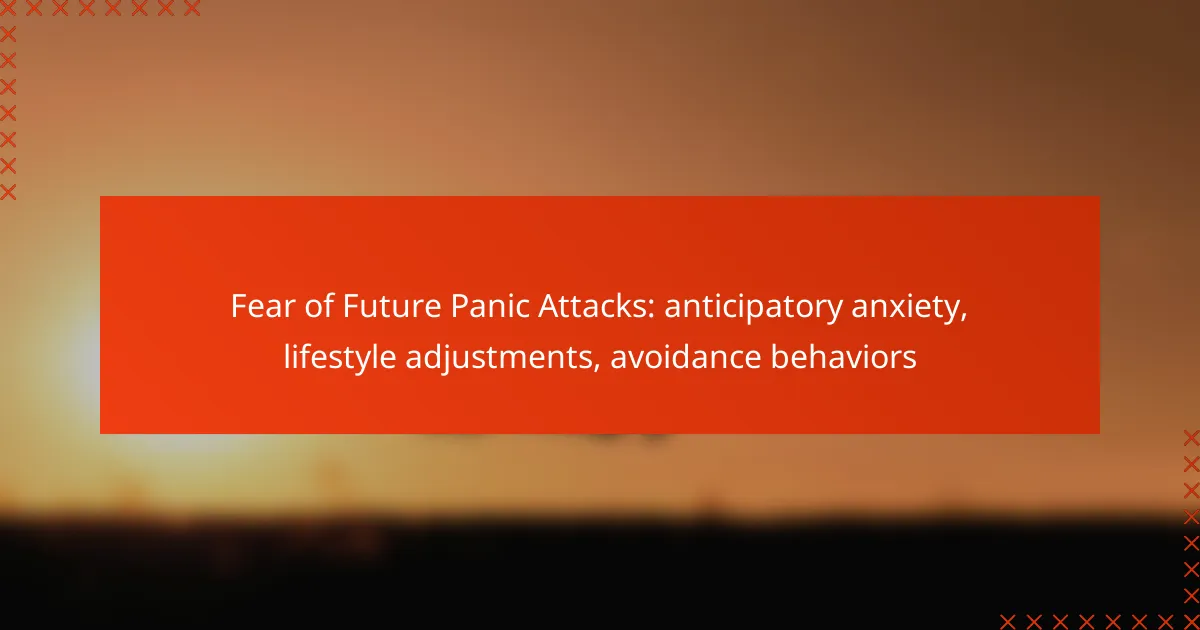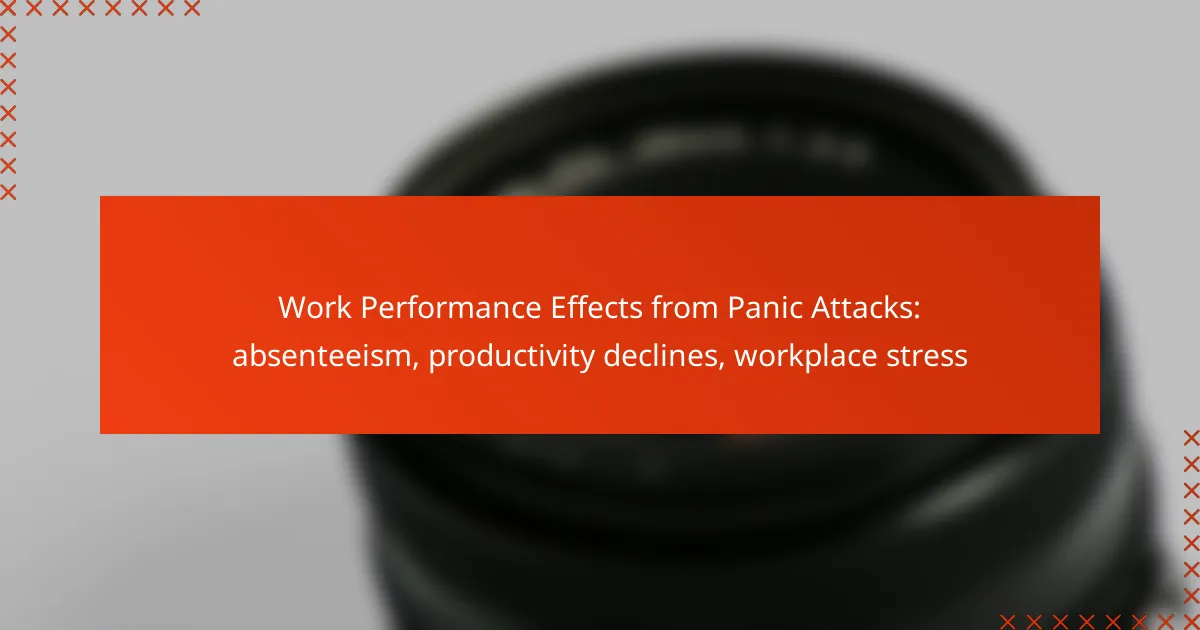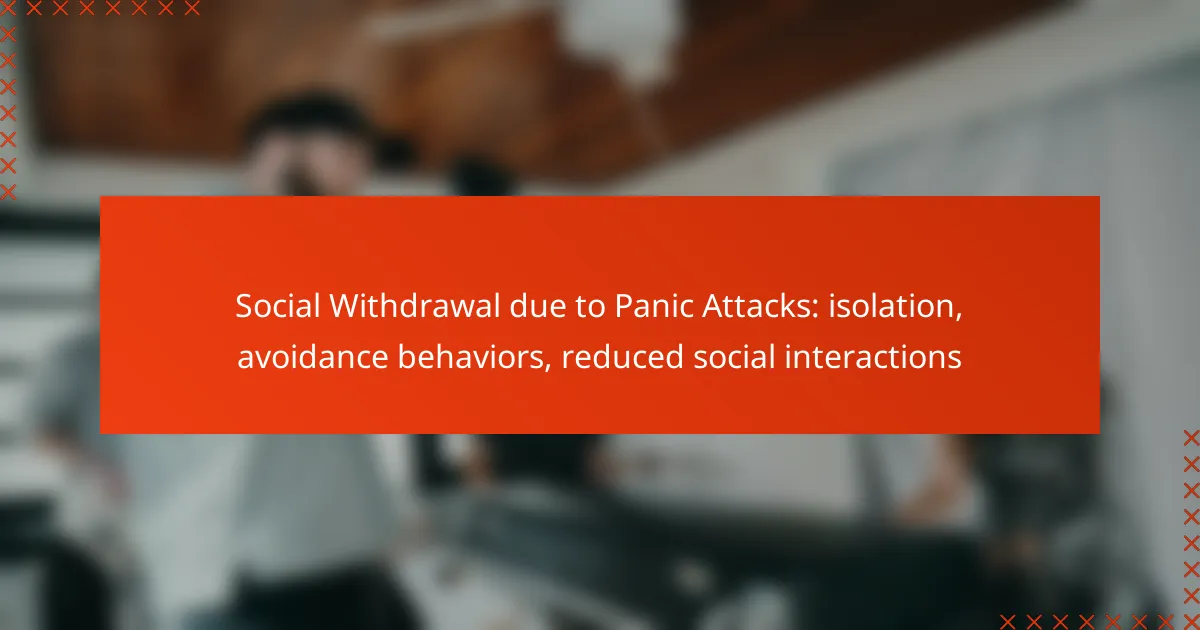Managing panic attacks in the workplace requires effective strategies that prioritize employee well-being. By fostering supportive environments, implementing stress management techniques, and providing access to HR resources, organizations can significantly alleviate anxiety and help employees navigate their challenges more effectively. Creating a culture of open communication and offering mental health support are essential steps toward a healthier workplace.
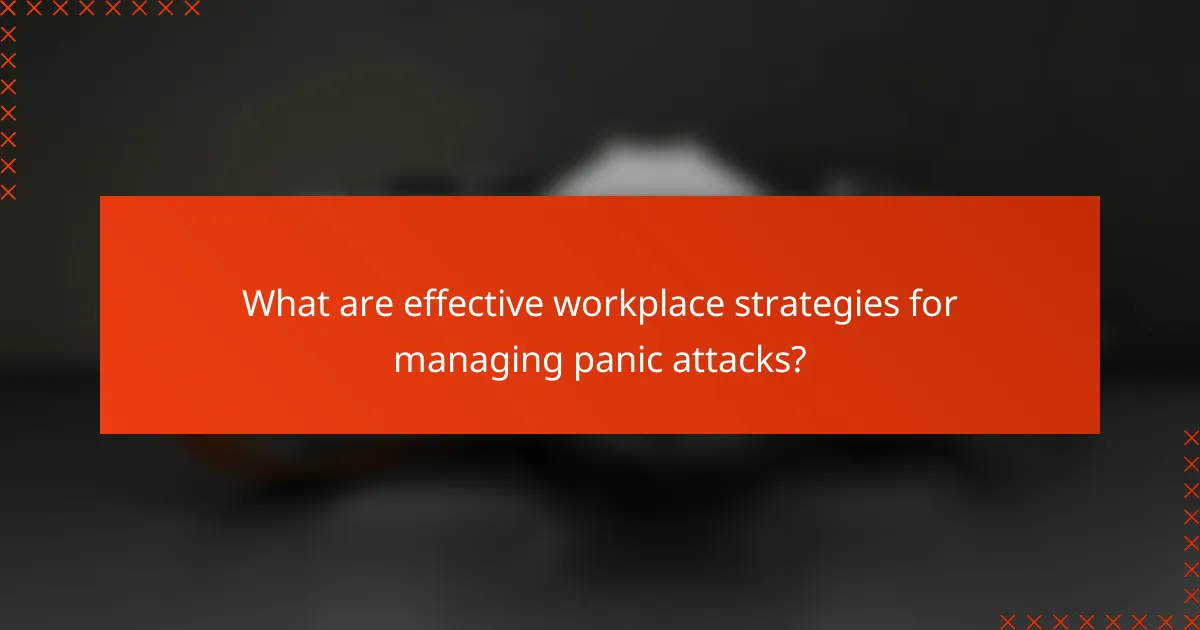
What are effective workplace strategies for managing panic attacks?
Effective workplace strategies for managing panic attacks include creating supportive environments, implementing stress management techniques, and providing access to resources. These approaches can significantly reduce anxiety and help employees cope with panic attacks more effectively.
Mindfulness training programs
Mindfulness training programs teach employees techniques to stay present and manage stress, which can help mitigate panic attacks. These programs often include practices such as meditation, breathing exercises, and guided imagery.
Organizations can offer workshops or online courses that last a few weeks, allowing employees to practice mindfulness regularly. Encouraging daily mindfulness practices can lead to long-term benefits in stress reduction.
Flexible work arrangements
Flexible work arrangements, such as remote work or adjustable hours, can help employees manage their anxiety levels and reduce the likelihood of panic attacks. By allowing employees to tailor their work environment and schedule, organizations can create a more accommodating atmosphere.
Employers should consider implementing policies that support work-life balance, such as compressed workweeks or the option to work from home on particularly stressful days. This flexibility can empower employees to take control of their mental health.
Employee assistance programs
Employee assistance programs (EAPs) provide confidential support for employees facing personal or work-related challenges, including panic attacks. These programs typically offer counseling services, resources, and referrals to mental health professionals.
Organizations should promote their EAPs and ensure employees know how to access these resources. Providing easy access to support can encourage employees to seek help before issues escalate.
Regular mental health workshops
Regular mental health workshops can educate employees about anxiety management and coping strategies for panic attacks. These workshops can cover topics such as stress reduction techniques, recognizing triggers, and developing resilience.
Hosting these workshops quarterly or bi-annually can foster a culture of openness around mental health and encourage employees to share their experiences and strategies with one another.
Access to mental health professionals
Providing access to mental health professionals, such as therapists or counselors, can be crucial for employees experiencing panic attacks. Organizations can partner with local mental health services or offer telehealth options for convenience.
Employers should ensure that mental health resources are easily accessible and that employees feel comfortable seeking help. Offering confidential sessions can encourage employees to address their mental health needs without fear of stigma.

How can employers create supportive environments for employees experiencing panic attacks?
Employers can foster supportive environments for employees facing panic attacks by prioritizing open communication, implementing stress-reduction initiatives, and providing quiet spaces for relaxation. These strategies help reduce anxiety and create a more inclusive workplace.
Establishing open communication channels
Open communication is essential for employees dealing with panic attacks. Employers should encourage a culture where employees feel safe discussing their mental health without fear of stigma or repercussions.
Regular check-ins and feedback sessions can help identify employees who may be struggling. Providing training for managers on how to handle such conversations can further enhance understanding and support.
Implementing stress-reduction initiatives
Stress-reduction initiatives can significantly benefit employees experiencing panic attacks. Employers might consider offering workshops on mindfulness, meditation, or stress management techniques.
Incorporating flexible work hours or remote work options can also alleviate stress. Providing access to mental health resources, such as counseling services, can further support employees in managing their anxiety.
Creating quiet spaces for relaxation
Designating quiet spaces in the workplace allows employees to take breaks when feeling overwhelmed. These areas should be comfortable and free from distractions, promoting relaxation and mental clarity.
Employers can enhance these spaces with calming elements, such as soft lighting, plants, and comfortable seating. Encouraging employees to use these areas during stressful times can help them manage panic attacks more effectively.

What HR resources are available for employees facing panic attacks?
HR departments often provide various resources to support employees experiencing panic attacks, including mental health accommodations, counseling services, and training for managers. These resources aim to create a supportive workplace environment that prioritizes mental well-being.
Guidelines for mental health accommodations
Employers should establish clear guidelines for mental health accommodations to assist employees dealing with panic attacks. This may include flexible work hours, remote work options, or designated quiet spaces for relaxation. Each accommodation should be tailored to the individual’s needs while aligning with company policies.
It is crucial for HR to communicate these guidelines effectively, ensuring that employees are aware of their rights and available options. Regular training sessions can help reinforce these policies among staff and management.
Access to counseling services
Providing access to counseling services is essential for employees facing panic attacks. Many organizations partner with Employee Assistance Programs (EAPs) that offer confidential counseling sessions, typically at no cost to the employee. These services can help employees develop coping strategies and address underlying issues contributing to their anxiety.
HR should promote these services actively, ensuring employees know how to access them. Consider offering workshops on stress management and mental health awareness to further support employees.
Training for managers on mental health
Training for managers on mental health is vital to foster a supportive workplace culture. Managers should be equipped with the knowledge to recognize signs of panic attacks and understand how to respond appropriately. This training can include role-playing scenarios and discussions on empathy and communication techniques.
By empowering managers with this training, organizations can create an environment where employees feel safe discussing their mental health challenges. Regular refresher courses can help keep mental health awareness a priority within the organization.
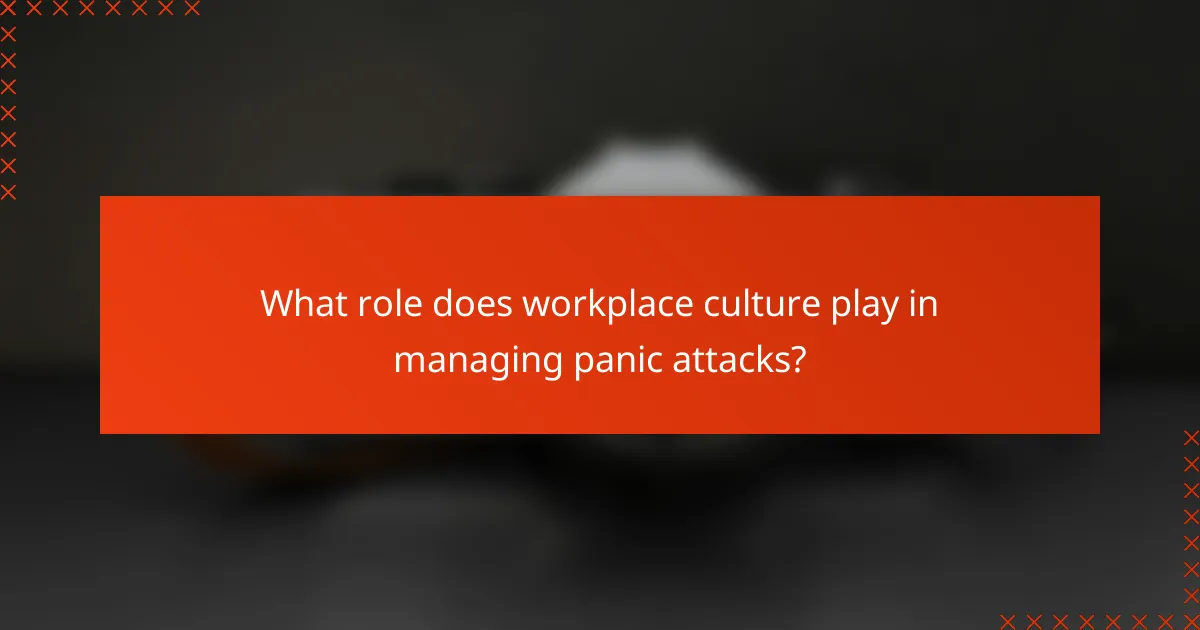
What role does workplace culture play in managing panic attacks?
Workplace culture significantly influences how panic attacks are managed, as a supportive environment can reduce stress and promote mental well-being. A culture that prioritizes understanding and support can help employees feel safe and valued, which is essential for managing anxiety-related issues.
Promoting a culture of empathy
Empathy in the workplace fosters an environment where employees feel comfortable discussing their mental health challenges. Leaders should model empathetic behavior by actively listening and showing understanding when employees express their struggles with panic attacks.
Implementing training programs that focus on emotional intelligence can enhance empathy among team members. Regular workshops or seminars can equip employees with the skills to recognize signs of distress in colleagues and respond appropriately.
Encouraging peer support programs
Peer support programs can provide a crucial safety net for employees experiencing panic attacks. These programs create opportunities for individuals to share their experiences and coping strategies in a confidential setting, which can alleviate feelings of isolation.
Organizations can establish mentorship or buddy systems where employees are paired to offer mutual support. Regular check-ins and group discussions can help maintain open lines of communication and reinforce a sense of community, making it easier for employees to seek help when needed.

How can technology assist in managing panic attacks at work?
Technology can play a significant role in managing panic attacks at work by providing tools for stress management and access to mental health resources. Various applications and virtual therapy options can help employees cope with anxiety and create a supportive work environment.
Mental health apps for stress management
Mental health apps can offer a range of features designed to help users manage stress and anxiety effectively. Many apps include guided meditations, breathing exercises, and mood tracking to help identify triggers and patterns. Popular options like Headspace and Calm provide structured programs that can fit into a busy workday.
When selecting an app, consider features that align with your specific needs, such as customizable reminders or community support. Some apps may offer free trials, allowing users to explore their effectiveness before committing to a subscription.
Virtual therapy options
Virtual therapy options provide convenient access to mental health professionals, making it easier for employees to seek help without the constraints of traditional in-person visits. Platforms like BetterHelp and Talkspace connect users with licensed therapists through video calls, messaging, or phone sessions, often at flexible hours.
When considering virtual therapy, evaluate the qualifications of the therapists available and check if the platform is covered by your health insurance. This can make therapy more affordable and accessible, ensuring that employees receive the support they need during challenging times.
